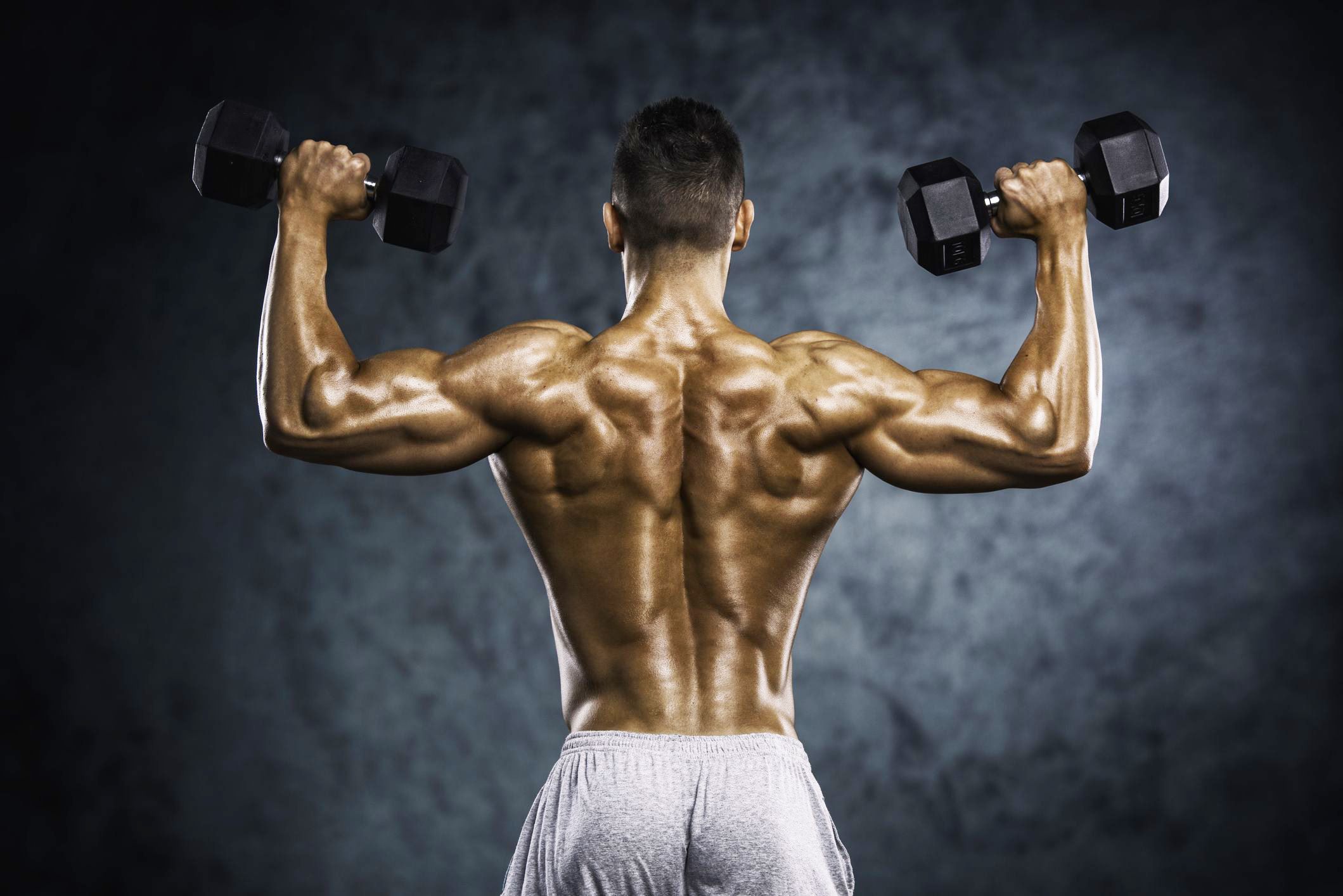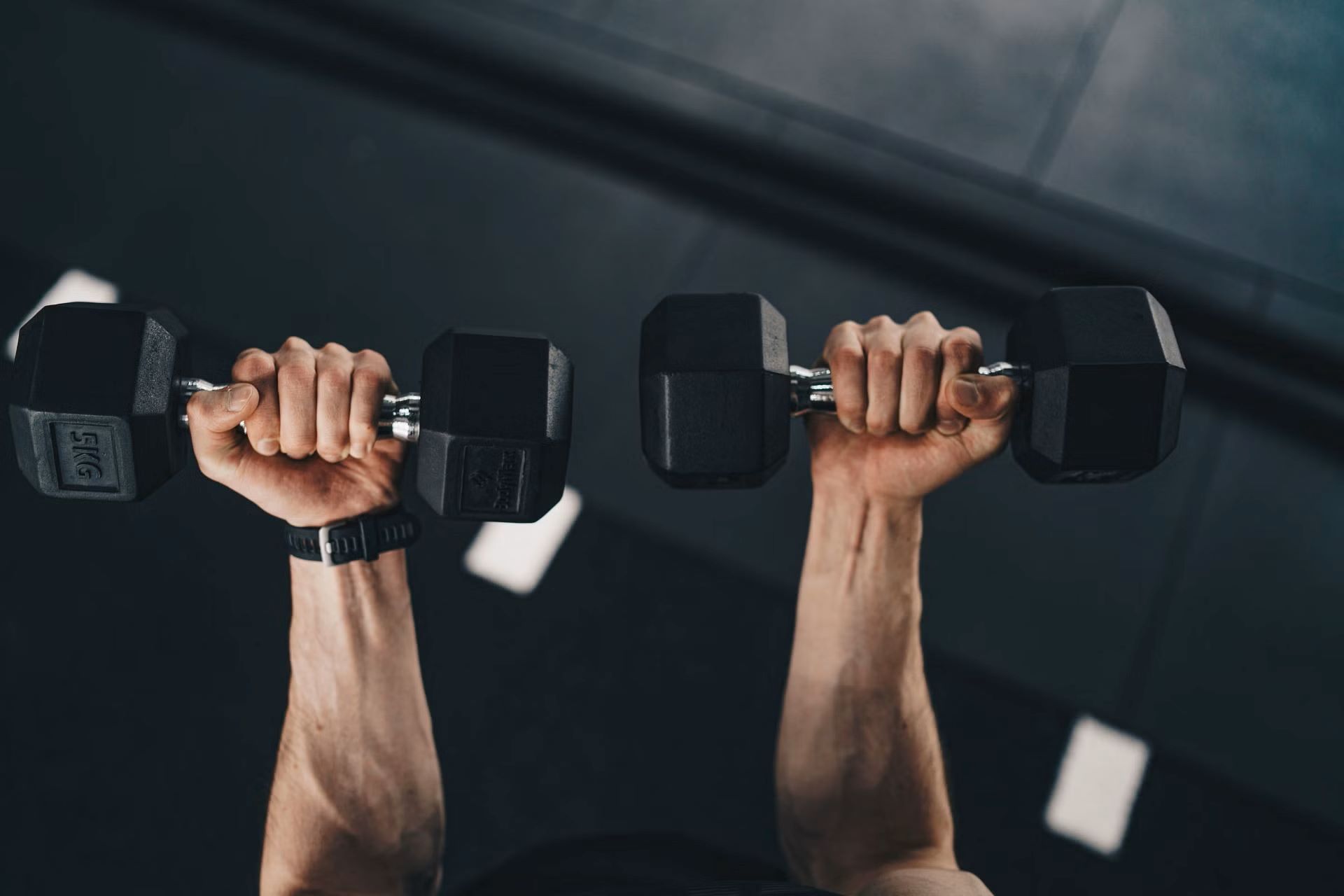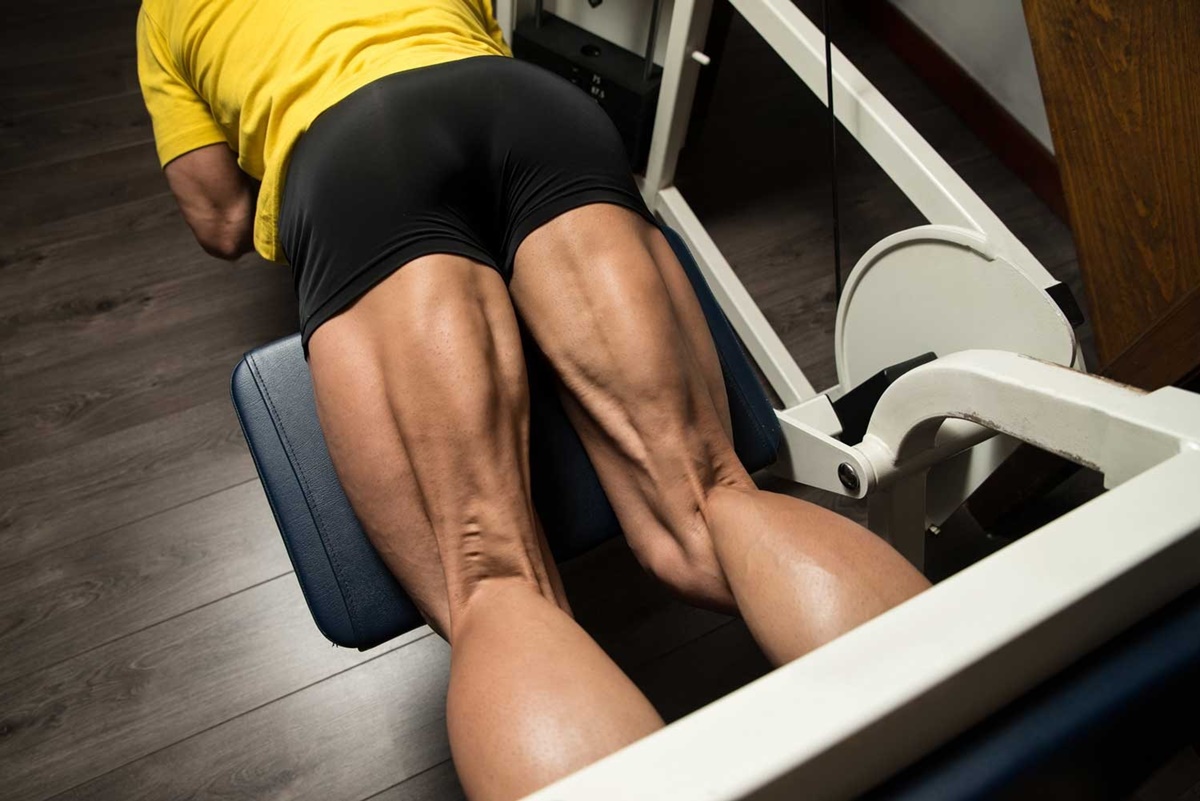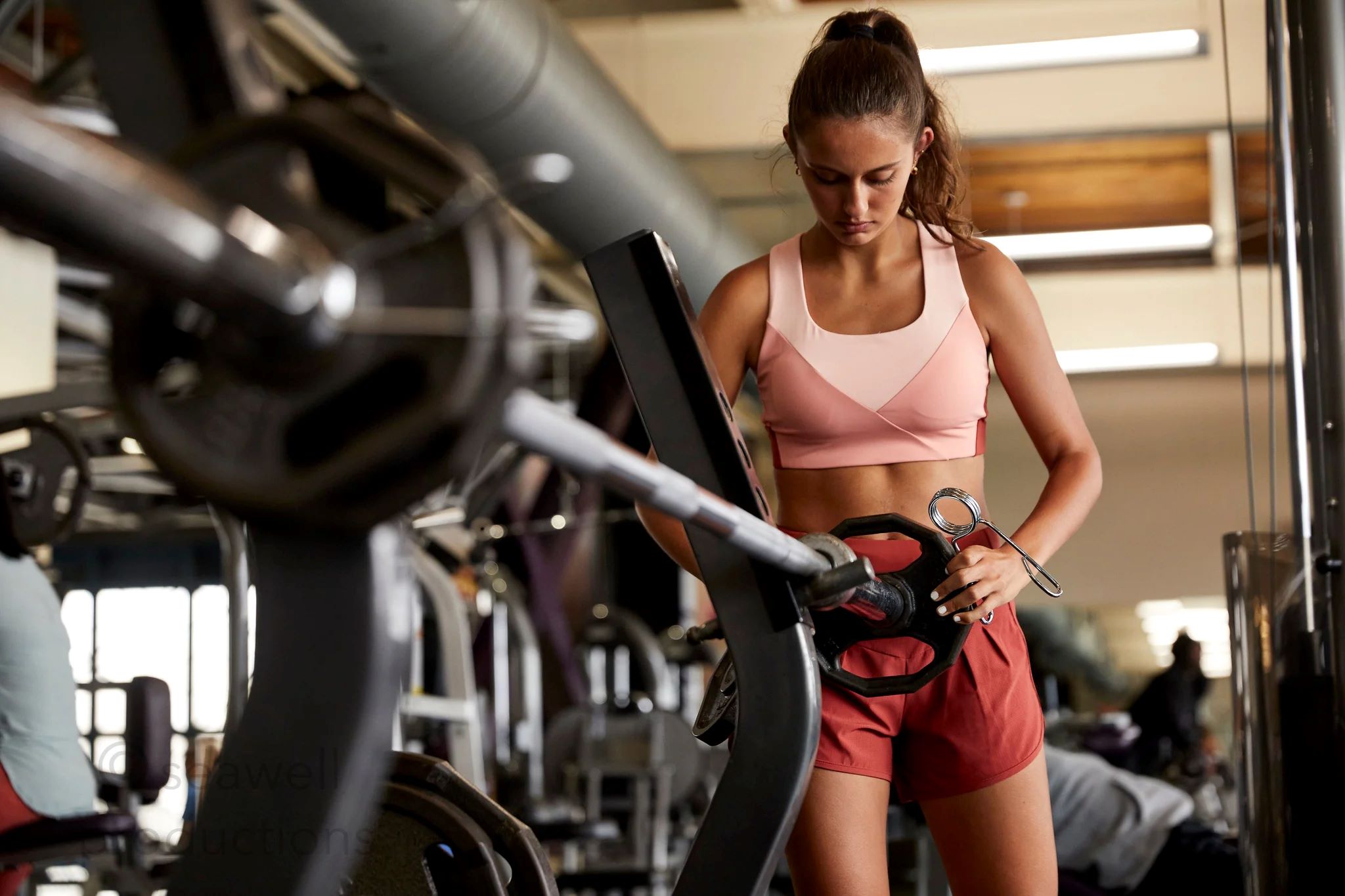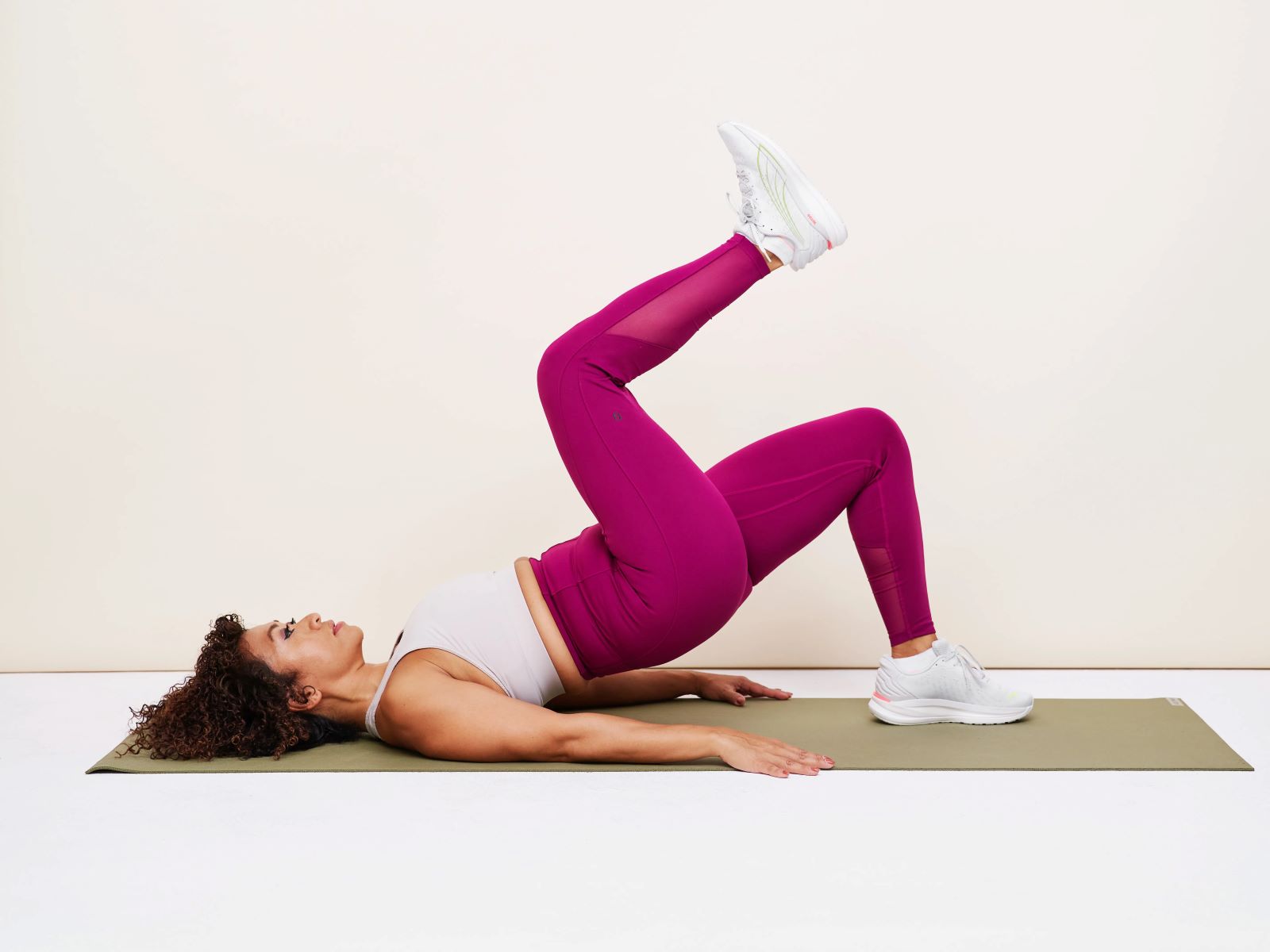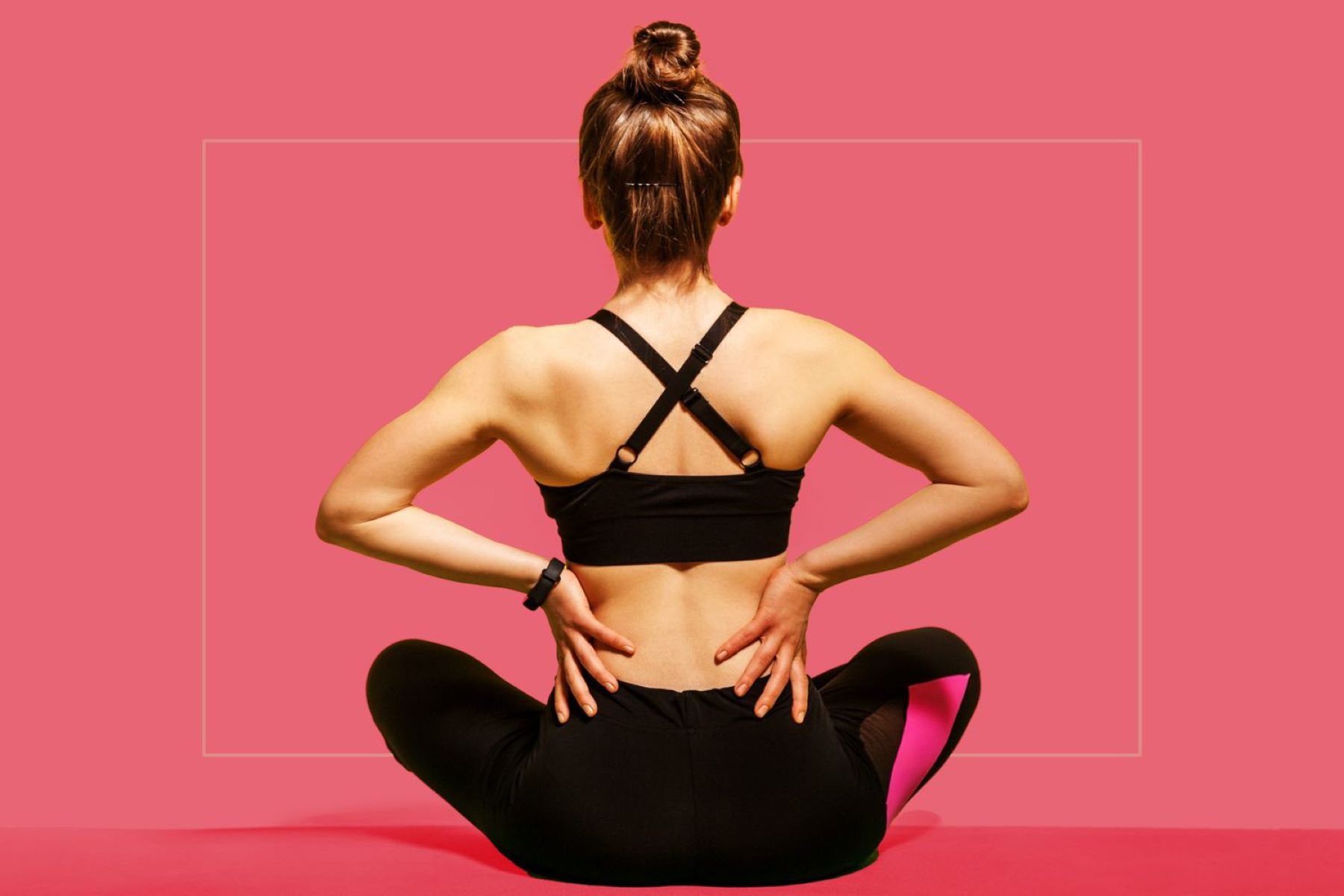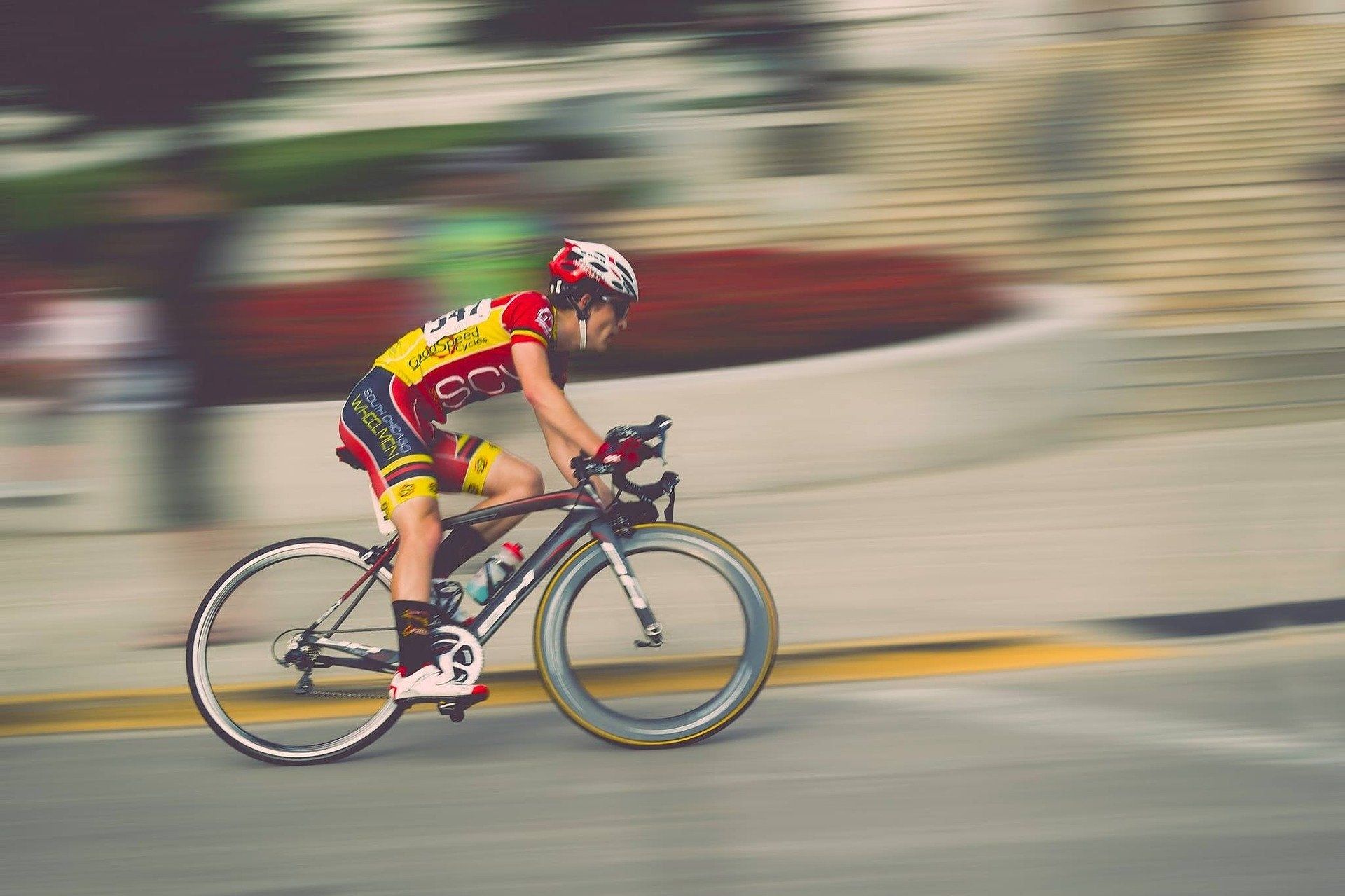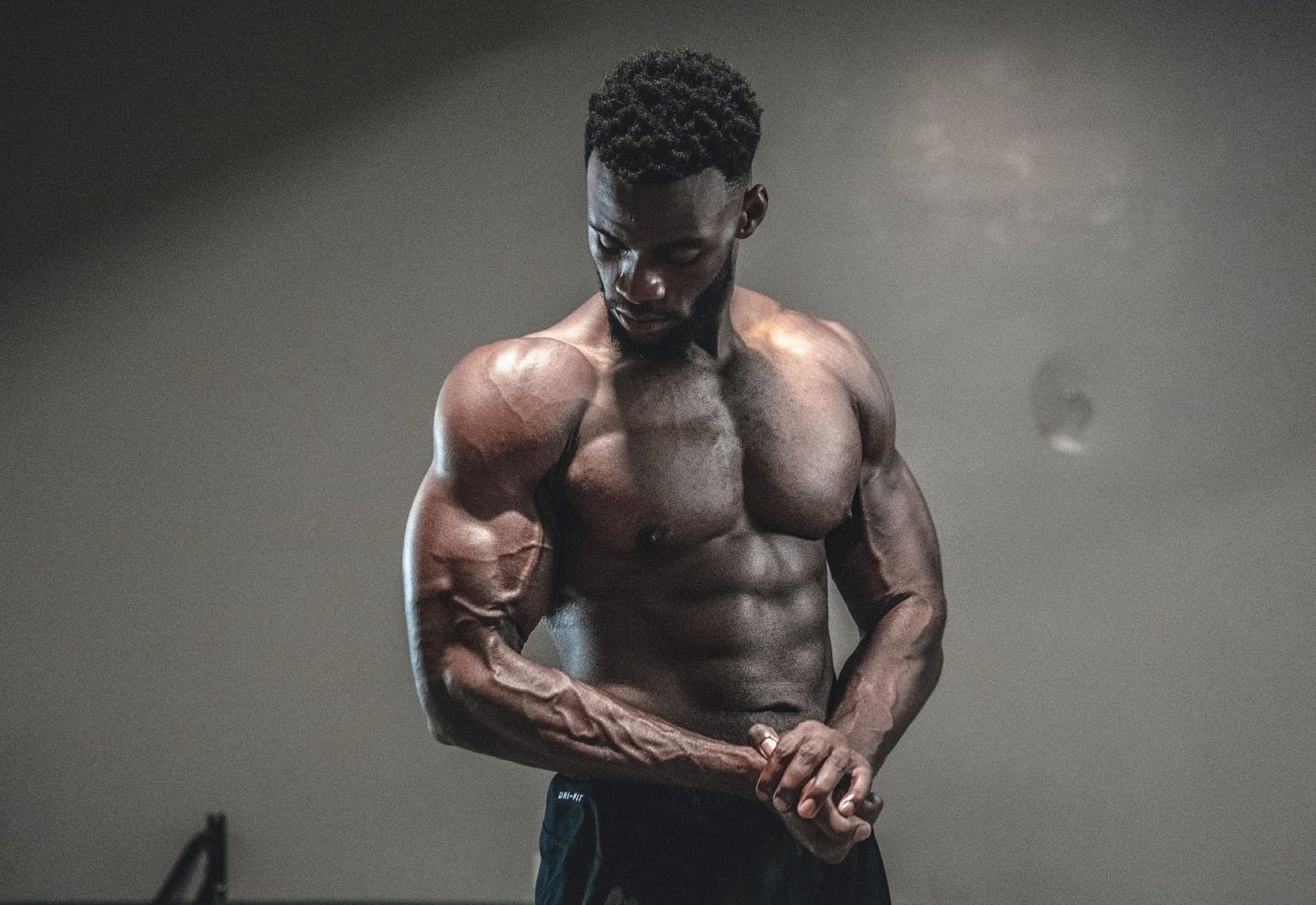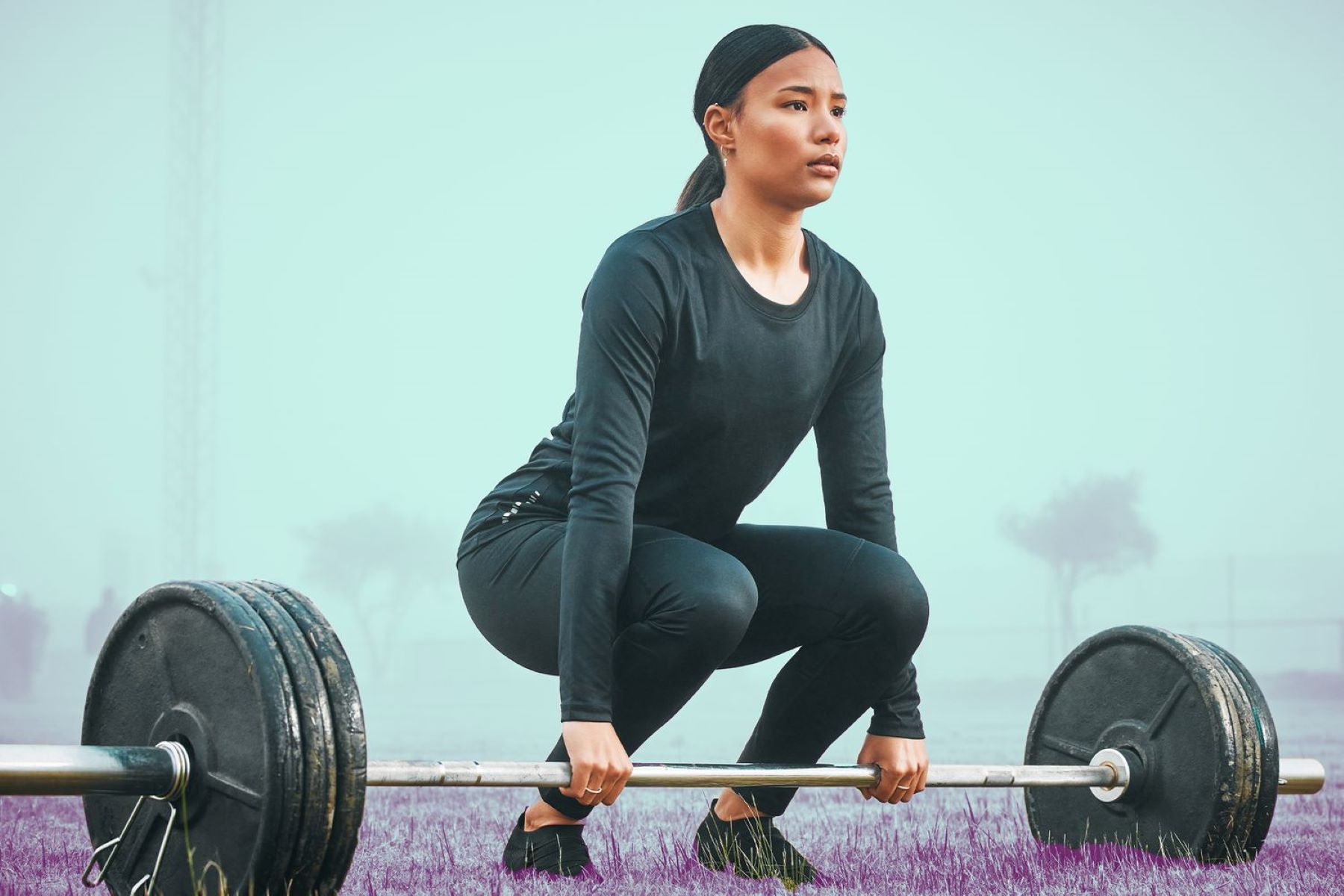

Featured
What Do Deadlifts Workout
Modified: August 19, 2023
Discover what muscles deadlifts target and how they can help you improve your strength and overall fitness. Featured tips and exercises to maximize your deadlift workouts.
Introduction
Welcome to the world of strength training! If you’re looking to build overall strength, improve your posture, and increase your muscle mass, deadlifts are an exercise you shouldn’t overlook. Deadlifts are a foundational compound movement that engages multiple muscle groups, making them one of the most effective exercises for strength and muscle development.
Deadlifts are not just for powerlifters or bodybuilders; they can benefit anyone who wants to improve their fitness level and overall body composition. Whether you’re a seasoned gym-goer or a beginner, incorporating deadlifts into your workout routine can yield a multitude of benefits.
In this article, we will dive into the world of deadlifts, exploring the various benefits they offer, the muscles they target, proper technique and form, modifications and variations, and more. By the end of this article, you’ll have a comprehensive understanding of what deadlifts can do for you and why they should be a staple in your strength training regimen.
So, grab a cup of coffee, put on your workout gear, and let’s get started on this journey to discover how deadlifts can transform your body and elevate your fitness game.
Benefits of Deadlifts
Deadlifts offer a wide range of benefits that go beyond just building strength. Here are some of the key advantages of incorporating deadlifts into your workout routine:
- Strengthens the entire body: Deadlifts are a compound exercise that targets multiple muscle groups simultaneously. They engage muscles in the lower body, including the glutes, hamstrings, and quadriceps, as well as the upper body, such as the back, shoulders, and arms. By working multiple muscle groups at once, deadlifts contribute to overall body strength development.
- Improves posture and core stability: Deadlifts require a stable and upright posture throughout the movement. This helps strengthen the muscles in the core, including the abs and lower back, which are key for maintaining proper alignment and stability. Regular deadlift training can lead to improved posture and reduced risk of back pain.
- Increases muscle mass and definition: Deadlifts are a compound movement that recruits a significant amount of muscle fibers. By challenging these muscles with heavy weight, deadlifts stimulate muscle growth and development. This leads to increased muscle mass and improved muscle definition, particularly in the glutes, hamstrings, and lower back.
- Boosts functional strength: As a functional exercise, deadlifts mimic natural movements like lifting heavy objects off the ground. By training these movements, deadlifts improve everyday functional strength, making tasks such as moving furniture, lifting groceries, or carrying your kids much easier and safer.
- Enhances athletic performance: Deadlifts not only build overall strength but also improve power and explosiveness. The movement pattern involved in deadlifts translates into better performance in sports and activities that require explosive movements, such as sprinting, jumping, and throwing.
These are just a few of the many benefits that deadlifts offer. Whether your fitness goals involve building strength, sculpting your physique, improving posture, or enhancing athletic performance, deadlifts can be a valuable addition to your workout routine.
Muscles Targeted by Deadlifts
Deadlifts are a compound exercise that engages several major muscle groups in the body. Unlike isolation exercises that primarily target specific muscles, deadlifts work multiple muscles simultaneously. Here are the primary muscles targeted by deadlifts:
- Hamstrings: The hamstrings, located at the back of the thigh, are heavily activated during deadlifts. This muscle group consists of the biceps femoris, semitendinosus, and semimembranosus. Deadlifts provide an excellent opportunity to strengthen and develop the hamstrings.
- Glutes: The gluteal muscles, including the gluteus maximus, medius, and minimus, play a significant role in deadlifts. They are responsible for hip extension, which is a crucial movement during the exercise. Deadlifts can help build strong and shapely glute muscles.
- Quadriceps: The quadriceps, located at the front of the thigh, are also engaged during deadlifts. These muscles, including the rectus femoris, vastus lateralis, vastus medialis, and vastus intermedius, help with knee extension and provide stability during the lift.
- Erector spinae: The erector spinae muscles, located along the spine, are responsible for maintaining an upright posture and extending the back. Deadlifts heavily engage these muscles, making them stronger and more resilient.
- Trapezius and Rhomboids: The trapezius muscles, located in the upper back, and the rhomboid muscles, between the shoulder blades, are engaged during deadlifts to stabilize the shoulder girdle and maintain proper posture throughout the movement.
- Forearms: Deadlifts require a strong grip to hold the weight. This places significant stress on the muscles of the forearms, including the flexor digitorum profundus, flexor carpi ulnaris, and brachioradialis, resulting in improved grip strength and forearm development.
These are the primary muscles targeted by deadlifts. However, it’s important to note that deadlifts also engage several other supporting muscles, including the calves, core muscles, and upper body muscles such as the deltoids and triceps. The compound nature of the deadlift exercise makes it an incredibly efficient way to work multiple muscle groups in a single movement.
Technique and Form in Deadlifts
Proper technique and form are crucial when performing deadlifts to ensure safety and maximize the benefits of the exercise. Here are the key elements to focus on when executing deadlifts:
- Foot Position: Start with your feet shoulder-width apart. Position them under the barbell with the midfoot aligned with the bar. The toes should be slightly pointed outward to help with balance and stability.
- Grip: Use an overhand grip, also known as a pronated grip, where both palms face your body. Grip the bar just outside shoulder-width, ensuring that your hands are symmetrical and centered on the bar.
- Starting Position: Bend at the hips and knees, lowering your body until your shins touch the bar. Keep your back straight, chest up, and shoulders back. Engage your core muscles to maintain a stable spine.
- Lift: Push through your feet and drive your hips forward as you stand up, simultaneously pulling the barbell up your legs. Maintain a neutral spine position throughout the movement, avoiding excessive rounding or arching of the back.
- Lockout: Once the barbell is at the top of the movement, fully extend your hips and knees, squeezing your glutes at the top. Maintain control as you lower the barbell back down to the starting position.
- Breathing: Inhale before initiating the lift and exhale forcefully as you push through the sticking point during the upward phase of the movement.
- Bracing: Prior to lifting, brace your core by taking a deep breath and contracting your abdominal muscles. This will provide additional support and stability to your spine.
- Progression: Start with light weights and gradually increase the load as your form and strength improve. It’s essential to prioritize technique over the amount of weight lifted.
Remember, maintaining proper form is crucial to prevent injuries and maximize the effectiveness of deadlifts. It can be helpful to seek guidance from a qualified trainer or coach to ensure that you are performing the exercise correctly and safely.
Variations and Modifications of Deadlifts
Deadlifts come in various forms and can be modified to suit different fitness levels and goals. Here are some popular variations and modifications of deadlifts:
- Conventional Deadlift: This is the most common form of deadlift where you start with your feet hip-width apart, grip the barbell with an overhand grip, and lift it from the floor using proper technique and form.
- Sumo Deadlift: In this variation, your feet are positioned wider than shoulder-width apart, with your toes pointing outward. You grip the barbell with a wide grip, and the movement is more focused on the glutes and inner thighs.
- Romanian Deadlift (RDL): The RDL is a variation that emphasizes the hamstrings and glutes. It involves a hip hinge motion with less knee flexion compared to the traditional deadlift. The barbell is lowered to knee or mid-shin level before returning to the starting position.
- Trap Bar Deadlift: Also known as hex bar deadlift, this variation utilizes a special barbell that allows you to stand inside it, with the weight evenly distributed on either side. The trap bar deadlift is generally considered more beginner-friendly and reduces stress on the lower back.
- Single-Leg Deadlift: This variation focuses on unilateral strength and balance. Stand on one leg and hinge at the hips, keeping the other leg elevated behind you. Lower the dumbbells or kettlebells towards the floor while maintaining a straight back and tight core.
- Deficit Deadlift: By standing on a raised platform or using weight plates, the deficit deadlift increases the range of motion. This variation places more demand on the muscles and requires greater flexibility.
- Stiff-Legged Deadlift (SLDL): The SLDL primarily targets the hamstrings and lower back. It involves keeping your legs nearly straight throughout the movement, with a focus on the hip hinge and maintaining a flat back.
- Paused Deadlift: Pausing for a few seconds at a specific point during the deadlift, usually just above or below the knee, adds an extra challenge and increases time under tension, targeting specific muscle groups.
These variations and modifications of deadlifts provide options to cater to different fitness levels, target specific muscles, or add variety to your training routine. Experiment with different variations to find what works best for your goals and preferences.
Common Mistakes to Avoid in Deadlifts
While deadlifts are a highly effective exercise, they can also be prone to mistakes that can negatively impact your form, safety, and overall results. Here are some common mistakes to avoid when performing deadlifts:
- Rounding the Back: One of the most critical mistakes is rounding the back during the lift. This puts excessive stress on the spine and increases the risk of injury. Focus on maintaining a neutral spine throughout the movement and engage your core to provide stability and support.
- Starting with the Hips Too High or Too Low: Improper hip positioning can compromise the movement’s effectiveness and safety. Starting with the hips too high puts excessive strain on the lower back, while starting too low limits your leg drive. Aim for a hip position that allows for a strong and efficient lift.
- Using Poor Grip Strength: Your grip strength plays a crucial role in maintaining control during deadlifts. Avoid using a weak grip or relying solely on straps or hooks. Instead, work on strengthening your grip through specific exercises like barbell holds and farmer’s walks.
- Not Engaging the Lats: Neglecting to engage the latissimus dorsi muscles, located in the back, can lead to a loss of stability and control. Before lifting, pull your shoulder blades down and back, actively engaging your lats to create a solid foundation for the lift.
- Bouncing the Weight: Avoid using momentum or bouncing the weight off the floor during the deadlift. This reduces the effectiveness of the exercise and increases the risk of injury. Instead, focus on a controlled and deliberate movement, maintaining tension throughout.
- Leaning Too Far Back at the Top: While it’s important to fully extend the hips at the top of the deadlift, be mindful not to overextend by leaning too far back. This can strain the lower back and disrupt the proper alignment of the spine. Maintain a tall and strong posture while squeezing the glutes.
- Ignoring Proper Breathing Technique: Breathing is a critical aspect of deadlifts. Failing to breathe properly can negatively impact your performance and stability. Remember to take a deep breath before lifting, brace your core, and exhale forcefully during the exertion phase of the lift.
- Lifting Too Heavy Too Soon: It’s essential to start with an appropriate weight and gradually progress as your form and strength improve. Lifting too heavy before mastering the technique can lead to poor form and an increased risk of injury. Focus on proper execution before increasing the load.
Avoiding these common mistakes will help you perform deadlifts with proper form, reduce the risk of injury, and maximize the benefits of the exercise. If you’re unsure about your technique, consider seeking guidance from a qualified fitness professional.
Deadlifts and Overall Strength Training
Deadlifts are a powerhouse exercise that can greatly contribute to your overall strength training routine. This compound movement recruits multiple muscle groups and requires a considerable amount of effort, making it an effective tool for building strength and muscle mass. Here’s how deadlifts can benefit your overall strength training:
- Full Body Engagement: Deadlifts work numerous muscle groups simultaneously, including the lower body, upper body, and core. This compound nature of the exercise helps you develop balanced overall strength, promoting functional fitness and improved performance in various daily activities.
- Increased Hormonal Response: Deadlifts are known for their ability to stimulate the release of growth hormone and testosterone, which are crucial for muscle growth and strength development. The heavy loads and high-intensity involved in deadlifts act as a potent stimulus for these hormonal responses, aiding in muscle hypertrophy and overall strength gains.
- Improved Posture and Core Stability: Deadlifts involve maintaining a neutral spine position and engaging the core muscles. This not only strengthens your core but also reinforces proper posture and spinal alignment. As you train deadlifts, you develop the strength and stability needed to maintain good posture throughout the day, reducing the risk of back pain and injuries.
- Functional Strength Development: Deadlifts mirror many real-life movements, such as lifting heavy objects from the ground. By improving your deadlift strength, you enhance your ability to perform these functional movements with more ease and efficiency. Whether it’s moving furniture, carrying groceries, or participating in sports, deadlifts can make everyday tasks and activities easier and safer.
- Progressive Overload Potential: Deadlifts allow for easy progression by gradually increasing the weight lifted over time. This progressive overload stimulates progressive strength gains and muscle growth. By consistently challenging your muscles with heavier loads, you can continue to push your physical limits and make continuous progress in your overall strength training.
- Improved Grip Strength: Deadlifts significantly tax your grip strength. The need to maintain a secure grip on the barbell throughout the movement helps develop forearm and hand strength. Strengthening your grip through deadlifts can have carryover benefits to other exercises that rely on grip strength, such as pull-ups and rows.
When incorporated into a well-rounded strength training program, deadlifts can be a powerful tool for developing overall strength, improving posture, and enhancing functional fitness. However, it’s important to ensure that you’re performing deadlifts with proper technique and form to maximize their benefits and minimize the risk of injury. If you’re new to deadlifts, consider working with a qualified trainer to learn the proper mechanics and gradually progress in your training.
Deadlifts for Weight Loss and Fat Burning
When it comes to effective exercises for weight loss and fat burning, deadlifts are often overlooked. However, incorporating deadlifts into your fitness routine can have a significant impact on your body composition goals. Here’s how deadlifts can aid in weight loss and fat burning:
- High Calorie Burn: Deadlifts are an intense compound movement that engage multiple large muscle groups. This results in a high calorie burn during and after the exercise. The more muscles you work, the more calories you burn. Incorporating deadlifts into your workouts can boost your metabolic rate and help create a calorie deficit, which is essential for weight loss.
- Muscle Building: Deadlifts are known for their ability to build muscle mass, especially in the lower body and back. The more lean muscle you have, the higher your resting metabolic rate becomes. Deadlifts stimulate muscle growth and help increase your overall muscle mass, which in turn helps increase calorie burn even at rest.
- Improved EPOC: Excess Post-Exercise Oxygen Consumption (EPOC), also known as the “afterburn effect,” refers to the elevated calorie burn that occurs after a workout. Due to the intense nature of deadlifts, they create a significant EPOC effect. This means that even after your workout, your body continues to burn calories as it recovers, helping to enhance weight loss and fat burning.
- Increased Metabolic Demand: Deadlifts place a substantial demand on your body’s energy systems due to the heavy weights and multiple muscle groups involved. This increased metabolic demand elevates your heart rate and forces your body to work harder, leading to a higher calorie burn during the exercise session.
- Overall Body Strengthening: Deadlifts are a compound movement that strengthens not only the muscles directly targeted but also the stabilizer muscles throughout your body. As you gain strength and improve overall muscle function, your body becomes more efficient at burning calories, leading to improved weight loss and fat burning.
- Improved Insulin Sensitivity: Regular resistance training exercises, such as deadlifts, can improve insulin sensitivity. This means that your body can better regulate blood sugar levels, which can help prevent insulin resistance and reduce the risk of developing type 2 diabetes. Improved insulin sensitivity can also facilitate weight loss by promoting the use of stored fat as an energy source.
While deadlifts can be an effective tool for weight loss and fat burning, it’s important to pair them with a well-balanced diet and a consistent exercise routine. Remember to gradually increase the intensity and weight lifted to avoid injury. And always listen to your body and consult a healthcare professional if you have any medical concerns or pre-existing conditions before starting a new exercise program.
Safety Tips and Precautions for Deadlifts
While deadlifts can provide numerous benefits, it’s essential to prioritize safety to prevent injuries. Here are some safety tips and precautions to keep in mind when performing deadlifts:
- Learn Proper Technique: Before attempting heavy deadlifts, take the time to learn and master proper technique. Engaging a qualified trainer or coach can help ensure that you understand the correct mechanics, form, and execution of the exercise.
- Warm-Up Adequately: Always warm up the body before deadlifting. Perform dynamic stretches and light cardio to increase blood flow, raise body temperature, and prepare the muscles and joints for the exercise.
- Start with Light Weights: If you’re new to deadlifting or returning after a break, start with lighter weights to allow your body to adapt and develop proper form. Gradually increase the weight as your technique and strength improve.
- Pay Attention to Your Grip: Ensure that your grip on the bar is secure and strong. Weak grip strength can compromise your control and increase the risk of accidents or dropping the weight. If necessary, use chalk or lifting straps to improve your grip.
- Use Proper Footwear: Choose shoes with a flat and stable sole to provide a solid base of support. Avoid wearing shoes with excessive cushioning or high heels, as they can compromise stability and balance.
- Engage Your Core: Prioritize core engagement throughout the entire movement. This helps stabilize the spine and maintain proper posture during the lift. Brace your core by taking a deep breath and contracting your abdominal muscles before each repetition.
- Listen to Your Body: Pay attention to your body’s signals and respect your limits. If you experience pain, discomfort, or excessive fatigue, it’s crucial to stop and assess what may be causing it. If necessary, consult a healthcare professional to address any concerns.
- Avoid Overtraining: Deadlifts are a demanding exercise that places significant stress on the body. Allow for adequate rest and recovery between deadlift sessions to prevent overtraining, reduce the risk of injury, and optimize your strength gains.
- Don’t Neglect Warm-Down: After your deadlift session, cool down properly by performing gentle stretches and foam rolling to release any tension in the muscles and enhance recovery.
- Modify if Necessary: If you have pre-existing injuries or limitations, consider modifications and variations of deadlifts that suit your needs. For example, using a trap bar or doing Romanian deadlifts can be gentler on the lower back.
By adhering to these safety tips and precautions, you can minimize the risk of injury and enjoy the benefits of deadlifts in a safe and effective manner. Remember, always prioritize proper form, listen to your body, and consult a healthcare professional if you have any concerns or questions.
Conclusion
Deadlifts are a powerhouse exercise that can truly elevate your fitness routine. They offer a multitude of benefits, including increased strength, improved muscle mass, enhanced posture, and functional fitness. Incorporating deadlifts into your workouts can be a game-changer, whether you’re a beginner or an experienced lifter.
By engaging multiple muscle groups simultaneously, deadlifts provide an efficient and effective way to build overall strength. They offer a well-rounded approach to strength training, targeting both the upper and lower body, as well as the core muscles. Additionally, deadlifts can aid in weight loss and fat burning through their high calorie burn, muscle-building effects, and metabolic boost.
While performing deadlifts, it’s crucial to prioritize proper technique and form to ensure safety and maximize results. By avoiding common mistakes, such as rounding the back or lifting too heavy too soon, you can reap the full benefits of this exercise while minimizing the risk of injury.
Remember, deadlifts can be modified and tailored to suit different fitness levels, goals, and physical conditions. Whether you choose to do conventional deadlifts, sumo deadlifts, or variations like single-leg or deficit deadlifts, it’s important to choose the variation that works best for you and aligns with your objectives.
Incorporating deadlifts into your strength training routine can lead to not only physical transformation but also improved overall fitness and quality of life. However, always prioritize your safety and listen to your body. If you have any concerns or questions, consult with a qualified fitness professional or healthcare provider.
So, embrace the challenge, grab that barbell, and start reaping the incredible benefits that deadlifts have to offer. It’s time to take your strength training to the next level and unleash your potential!

